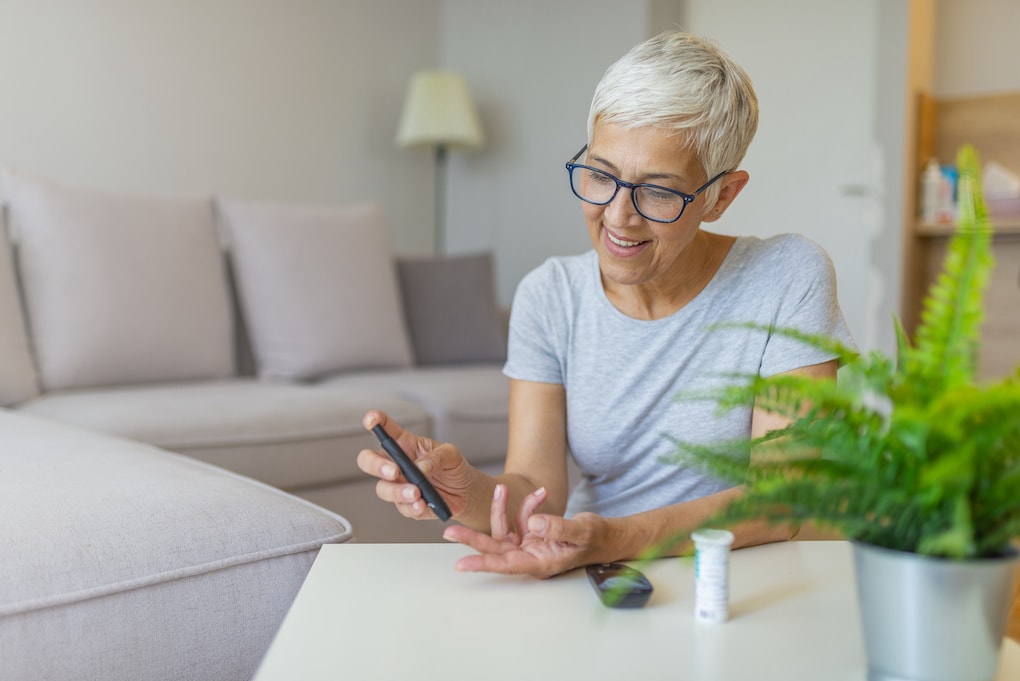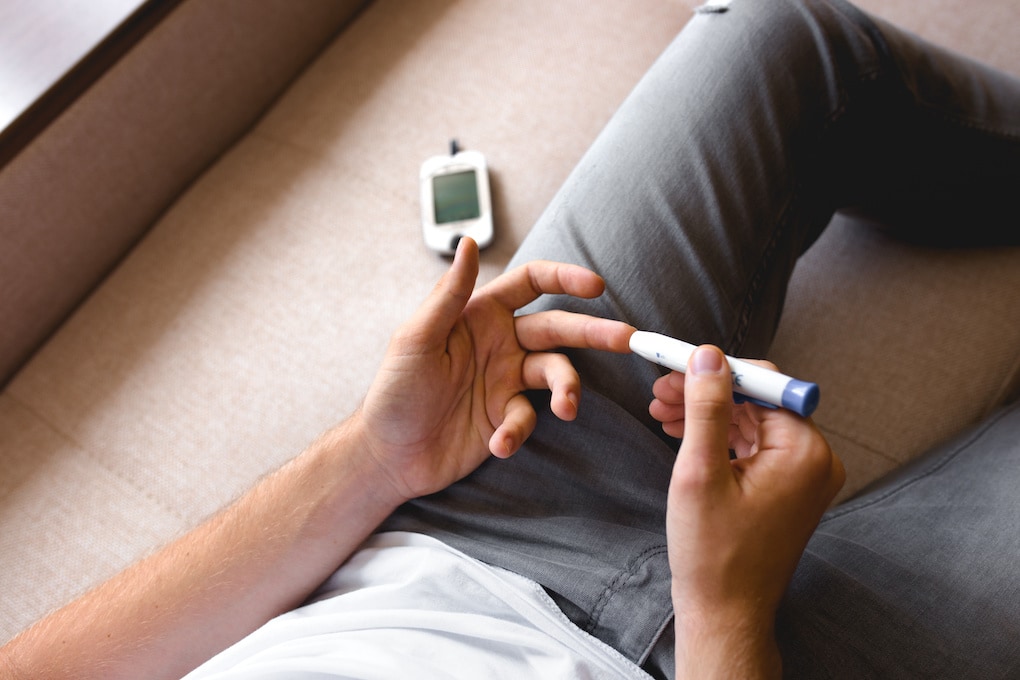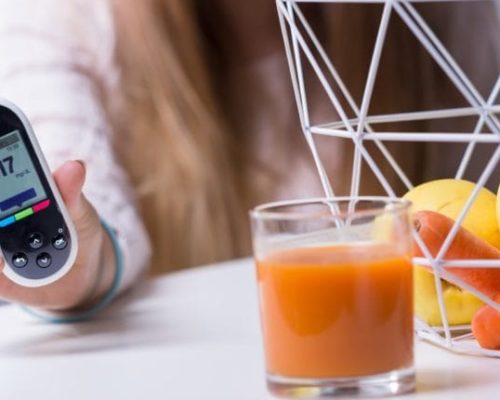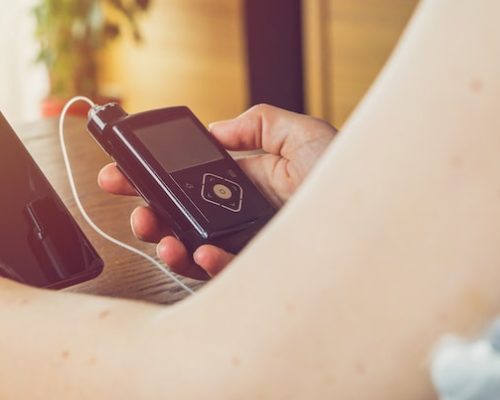When you are living with diabetes, one of the most important tools to have is a glucometer. This glucometer guide will cover how to use one for those who may not understand how they work, give tips on choosing between different types of meters available, and provide information about some common mistakes made when using them.
Table of Contents
What is a Glucometer Used for?
A glucometer is a device that measures your blood glucose levels. It tells you what foods can either increase or decrease those levels by measuring the sugar in your bloodstream and then displaying a reading based on its findings. These glucose readings help people with diabetes better manage their insulin doses and food intake so they can lead great, healthy lives and test their blood sugar levels on the go. Glucometers can be used by people with all types or levels of diabetes.
How to Use a Glucometer
Regular blood glucose monitoring helps to manage your diabetes and help control your blood sugar levels, it’s imperative you know how to use the device properly. Following the proper steps can ensure you get a pain-free and accurate reading every single time.
However, older methods require many steps in order to get accurate readings. It’s a lengthy process, but one that is very important.
- Wash your hands and prepare all of your supplies from your device to your lancets and alcohol wipes.
- Make sure the glucometer is turned on and ready to use with a new or fully charged battery.
- Load an unused test strip into the glucometer to get ready. Some may begin reading automatically if you push the test strip in all the way: be mindful of this.
- Locate your glucometer’s lancing device, which looks like a small pen and holds one needle at the end. If you’re using an automatic glucometer, this will be built into the device.
- Push down gently on the plunger until it clicks into place to set the needle.
- Set the depth of your lancet to determine how deep of a pin-prick you need to draw blood. This may be a button on the manual device or a setting on your auto-glucometer. Choose either “deep” or “shallow,” depending on what type of glucose monitoring equipment you are using. This setting might also be a series of numbers from high to low.
- Grab your alcohol pad and wipe the tip of your finger where you will be using the lancet to ensure a sterile area.
- Place the glucometer over your finger (on the side between your fingernail and finger pad) and push the button on your lancet. It should supply a very fast prick and immediately draw blood. Watch this video on how to best prick your finger.
- Take your test strip and apply a small drop of blood to the center of it. This will often be marked with a small line or arrow.
- When using an automatic glucometer with built-in test strips, wait for one second before removing the glucometer from your skin so that any air bubbles can rise to the surface of the strip. If there are no air bubbles, discard this sample and try again with a new test strip.
- Hold each end of the glucometer’s test stick as close together as possible at all times during use (this is called “wicking”), then wait until reading appears in the window.
- Read results right away if they’re available. If the reading seems off, try testing once more to confirm.
- Wipe away any blood—it’s small enough to stop bleeding pretty quickly.
- Record your results and take the appropriate action.
Utilizing an app-friendly glucometer can streamline much of these steps into a more simple, fast process—without sacrificing accuracy, and often improving it. The POPS Rebel device requires much fewer steps to complete your blood glucose readings. Here’s a list of the best glucose meters to choose from based on online reviews, including the Pops Rebel + Mina glucose meter app.
Who Should Use a Glucometer & When is the Best Time to Test?
Anyone who has diabetes should use a glucometer to track their blood glucose and manage their diabetes.
The American Diabetes Association and clinicians recommend that the best time to test is when you suspect your levels may be off. Still, it’s most important to do so before and after meals and at bedtime for all types of diabetics.
Reasons to use a glucometer include;
- Checking how well controlled your diabetes is and adjusting insulin and eating regimens appropriately.
- Indicate any patterns that show common times you have either spikes or drops in blood sugar
- Assess how well your treatment plan is working and monitor the effects of any medications or therapies outside of your regular insulin doses
- You may also see how stress, poor sleep, exercise, or certain foods affect your glucose levels throughout the day and learn how to prevent severe changes.
More specifically, those with type 1 diabetes should test multiple times per day (sometimes upwards of 10 times). Those with type 1 diabetes cannot produce adequate amounts of insulin, so they rely much more heavily on it to regulate their blood glucose. So they’ll want to test before and after meals (or anytime they consume food), before and after physical activity, before bed, and any other time they expect to have a crash or spike.
Type 2 or gestational diabetes is a little different and requires a lot less testing. Those with type 2 diabetes may not be reliant on insulin, so they can often manage their glucose levels by regular readings and eating the right foods at the right times. They should definitely test in the morning, 2 hours after meals (most important), and before bedtime isn’t a bad idea. Eat any snacks if necessary, then take another blood sample.
What Type of Glucometers are There?
There are three main glucometer options: blood glucose meters, continuous glucose monitors, and ketone meters.
Blood glucose meters require manual insertion of a lancet to take measurements while blood supplies could run out with constant monitoring; this would make them hard for people on hectic schedules that might not have access to regular food sources or medical facilities.
Continuous glucose meters allow constant readings by measuring glucose levels in the blood without needing to prick yourself repeatedly. These come with a little patch or device that stays connected to the body to measure blood glucose throughout the day.
Ketone meters measure your body’s ketones, which can be a good indication of when you might need insulin therapy or have developed diabetic ketoacidosis (DKA) but are not as necessary for those with type two diabetes who do not rely on as much insulin but still test their glucose levels frequently.
How to Choose the Best Glucometer
There isn’t just one right glucometer, so it’s important to research what is most appropriate for your lifestyle before making your decision. However, there are a few key things you can ask yourself before choosing the best one.
- Do you want to use your glucometer with an app on your smart device?
- Do you require long battery life? Would a rechargeable device work best?
- Do you need manual vs. continuous blood glucose monitoring?
- Do you need a user-friendly device for an elderly family member?
To choose the best glucometer, you can first speak with your doctor—they should be able to recommend more specifically the type of glucometer you might need. Then, you can do your research and read reviews online and see what the diabetes community is saying about their faves. Lastly, you can check out this list of the top 8 Glucose Meters for 2021. There are some great ones on there!
Tips and Tricks for Blood Glucose Monitoring
In order to get more accurate blood glucose readings and best manage your diabetes, there are some definite dos and don’ts that can help you avoid common mistakes and provide you with the best possible results.
- Make sure you keep your glucometer charged or have extra batteries on hand. Glucometers are most frequently used on the go, and the last thing you want is to end up with a dead device.
- Don’t use expired testing strips. Yes, test strips have an expiration date. They might still work but may not give the most accurate reading. For best test results, use them before that date. Bulk buying test strips can lead to them expiring before you get the chance to use them, so avoid that.
- Regularly clean your glucometer and lancing device. Since you are drawing blood, you definitely want to maintain a sterile surface to work with, and even wiping it with the alcohol wipe every time can make sure this is the case.
- Always keep your glucometer in its carrying case. The case will protect it from any accidental drops or falls, and if you toss it in your bag or purse, it keeps it from getting scratched or accidentally turning on.
- As always, keep a stash of snacks, insulin, and any additional medication on you if you get a bad reading and need to bring up your blood glucose level.
Glucometers have been revolutionary in aiding those with diabetes in their management. They can take more readings, get continuous glucose monitoring on the go, and get in-time results as they need. For more tips on managing your diabetes even better, check out the rest of our blog.











